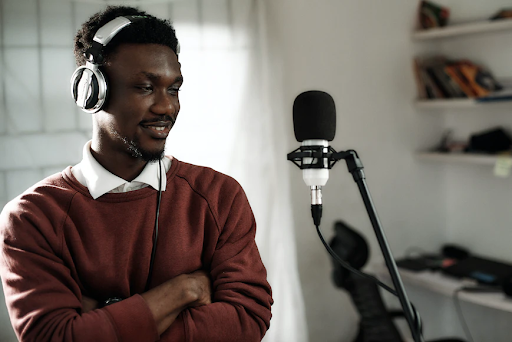Perhaps you’ve decided to become a voice actor and are looking to become successful quickly. According to statistics, the global voice recognition market size is expected to increase to $27.16 billion by 2026. As a beginner, making mistakes in voice-overs is a rite of passage, but if you wish to make it big, you should be able to shake the nerves off and address problems head-on.
While producing quality voice-overs demands considerable effort, it’s worth it. Content that targets different senses and is presented using various styles garners the most attention from the masses, helping you connect better with your audience. Keep reading as we look at some voice-over mistakes and the most effective strategies to avoid them.
1. Recordings with Mouth Noises
Mouth noises include clicks, annoying pops, and smacks that are heard over voice-over recordings and are one of the most noticeable rookie mistakes. These are caused by the teeth, tongue, and saliva working together to produce sticky sounds as we speak. You won’t hear them normally, but they are amplified in voice-over recordings, and preventing them is essential.
Your best bet is to stay hydrated because dehydration is the root cause of unwanted mouth noises. However, this doesn’t mean you should guzzle water right before stepping in front of the mic because that also leads to excessive mouth noise. Drink at least eight glasses or 64 ounces of water every day. You should note that a person’s needs depend on their environment, activity level, and other lifestyle factors, so adjust your intake accordingly. Take small sips between auditions to stay hydrated.
2. Low-Quality Equipment
When you start your voice-over career, you might be tempted to invest in the cheapest equipment while figuring out whether this is the right choice for you. Don’t be surprised if you end up disappointed in what you purchase since the low-quality equipment isn’t always up to the professional task of voice recording, especially the microphone.
On the other hand, it’s not recommended to overindulge and buy the most expensive mic on the market. When you outfit your home studio, you should research and test out various options before committing to one. Finding the right equipment depends on your budget, what features are ‘nice-to-have’, what features are an absolute must, and any other requirements you have.
3. Low Audio Volume
Clients usually listen to a series of voice-over auditions before casting for a project. If your volume is set too low compared to your competitors, you’ll put yourself and your reads at a disadvantage. You can fix this mistake by normalizing your audio to -3dB or -1dB, so your auditions are loud enough for clients to hear.
Volume is a crucial aspect that prevents most beginner voice actors from winning auditions; the better your audio quality, the more chance you have of tripling your income and quadrupling shortlists instantly. You can find an expert in the industry or an audio engineer to review your auditions and help you reach the standard audio quality that most clients demand.
4. Fixing Echoes and Reverberations with Editing
The best rule to follow for processing and editing your audio files involves the phrase ‘less is more.’ You might do more damage to your audio quality if you carry out too much noise reduction for repairing sound rather than letting the original recording be as it is. Overused noise reduction results in ‘echoey’ and ‘hollow’ audio and is easily recognized by clients.
Fixing unwanted background noises, such as low humming or echoes, requires treating the issue at its source. Start by finding an optimal space at home to record and avoid distractions and sounds of daily life. For example, you can work in an office, bedroom, or closet. Once you’ve established your recording space, treat revert by placing duvets, rugs, and heavy blankets all over the area. Follow this by using the clap test to test if you hear any sound or echo when you clap once.
You won’t require much processing or editing by ensuring that background noise is no longer in the picture. In fact, you’ll be free to put in extra time for auditioning and impressing potential clients with high-quality sound. It would be best if you also checked out this guide on how to get into voice acting, as it covers all the basics.
5. Non-Conversational Language
Writing a script is very different from writing a blog post; keep this in mind for your voice-over. A text might read and look well on paper, but that doesn’t mean it’ll sound the same because it’s written to be read, not heard. Make your writing conversation using ‘We,’ ‘You,’ and ‘I’ to connect with your audience and appear friendlier. Conduct a table read with your loved ones and avoid adding a lot of industry jargon if the project is industry-specific.
Endnote
Voice-over production mistakes lead to trouble both during and after the recording. Once you can pinpoint the problems with your audio, you can create better content and attract more views to your videos. Be mindful about preparing correctly for the entire process, and seek out experienced individuals to help you edit and finalize your voice-overs. Your video should convey the message with an air of professionalism, weight, and validity.





